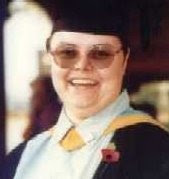It's also interesting that Sylvie (for example) doesn't comprehend the concept of scaring oneself for pleasure - although she doesn't realise that Readers who like to re-read the scary parts of her story are going to be less scared than Sylvie herself, to whom the events are happening.
I found Townley's conception of Internet cookies producing actual (inedible) cookies/biscuits amusing; as was the idea of the characters having to learn to step down lines of text when the story is being read on (and scrolled up) a screen, instead of in a book. I also liked the way that changing the words, affected the characters: thus Pingree the annoying and scheming jester, was transformed into a "greenpig" (which is very nearly an anagram of his name) when he falls into a "soft patch" in the text. A "soft patch" is an area of the story that's been affected by a virus which is created by Claire's brother Ricky's grandson, who is also called Ricky and who is as destructive as his grandfather was, but where his grandfather set fire to the original (and only) copy of The Great Good Thing, Ricky creates a virus to damage/destroy the text.


No comments:
Post a Comment